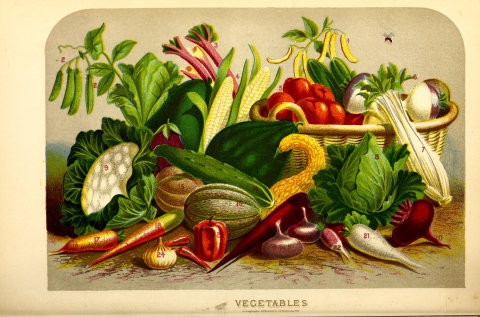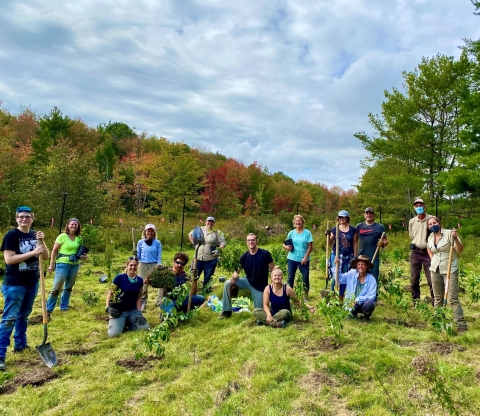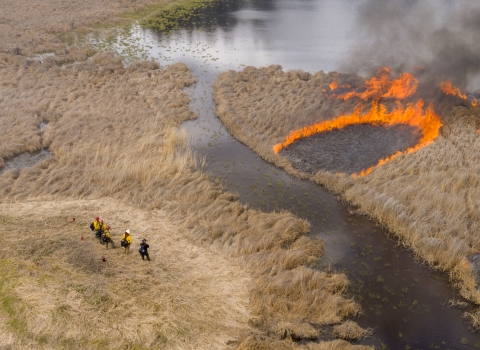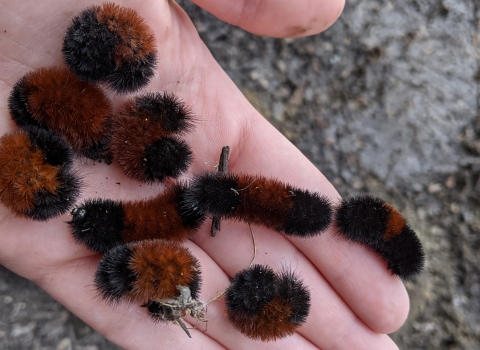Feeling indecisive on your resolutions for the new year? We don’t blame you. Resolutions can be tough to choose and even tougher to maintain.
Perhaps resolutions just aren’t your cup of tea … that’s okay! But there are certain choices we can make that are truly worth it — not only for ourselves, but for everyone.
As climate change climate change
Climate change includes both global warming driven by human-induced emissions of greenhouse gases and the resulting large-scale shifts in weather patterns. Though there have been previous periods of climatic change, since the mid-20th century humans have had an unprecedented impact on Earth's climate system and caused change on a global scale.
Learn more about climate change continues to affect our daily lives, wildlife, and the important ecosystems we depend on, we can all resolve to make small changes that will have huge positive impacts on the health of our planet. Here are five realistic ideas to take into the new year, making it your most sustainable yet!
1. Bring nature to your neighborhood
Give back to the wildlife in your community while boosting benefits for you, too! Planting small pollinator or vegetable gardens, native plants on the patio, and even window boxes can brighten up any yard or doorstep, with huge benefits to the birds and pollinators in your neighborhood. These small actions can also improve air quality and even your mood. Provide the perfect habitat by hanging bird houses or bee hotels outside your home and making your windows bird-friendly to prevent collisions.
2. Pump the brakes on your car — and take the scenic route
Burnt out on traffic and endless road construction? Consider switching up your commute and trying something more environmentally friendly — walking, running, biking, skating, scootering, or surfing (okay, maybe not that last one). Not only will you cut carbon emissions from your car, but you’ll also save yourself some cash and burn some calories.
There’s something about non-motorized transportation that inspires curiosity and connection to the outdoors, even in the familiarity of your own neighborhood. Take time to slow down, enjoy the trees and flowers, spot the birds, and savor the moment — your body, mind, and wallet will thank you.
3. Add some color to your plate
The United Nations estimates that livestock production accounts for nearly one-third of human-caused global methane emissions, making it one of the most powerful contributors to climate change. Easing up on dairy and meat consumption can have a tremendous effect on reducing these emissions. It need not be an all-or-nothing approach, either; if we each subbed a veggie option for even once or twice a week, we’d make a significant difference. Plus, adding more color to your plate never hurts!
Food for thought: Supplement your dinner table by harvesting wild game through hunting. Providing local, healthy meat options for the family is a rewarding part of hunting for outdoor enthusiasts. Hunting is allowed on many national wildlife refuges.
4. R&R — Reduce and reuse
Small changes add up quickly. Simple swaps around the house can greatly reduce the amount of waste and pollution in our environment. Reusable bottles and bags go a long way to reducing our use of plastics and, in turn, lower carbon emissions from plastic production, transport, and recycling. You can go one step further by replacing single-use products like paper towels with cloth, or even composting kitchen waste. Take time for some R&R, knowing this resolution is sure to last the year.
5. Volunteer with us!
Volunteering can feel intimidating at times; you might wonder if it’s the right fit for you. The short answer: yes! The Service welcomes volunteers of all ages and backgrounds, and there’s a multitude of reasons to try it. You may want to give back to your community or share your knowledge of nature or passion for the outdoors. Maybe you want to serve a worthy cause, make new friends, or simply get some fresh air.
Volunteers may lead nature tours, restore habitat, rescue turtles, conduct plant and animal surveys, remove invasive plants, or teach kids about the importance of ecosystems — all great ways of connecting to nature and leaving our environment better than we found it.
Want to volunteer with us? Click here to learn more!
Bonus: Buy a Federal Duck Stamp!
One of the easiest ways to support habitat conservation and fight the effects of climate change is purchasing a Federal Duck Stamp. Ninety-eight percent of Duck Stamp receipts goes directly to acquiring and protecting wetland habitat and purchasing conservation easements for the National Wildlife Refuge System. Wetlands acquired through Duck Stamp funds are invaluable; they help purify water, aid in flood control, reduce soil erosion and sedimentation, and provide habitat for all kinds of birds and other wildlife.
In addition to conserving habitat, a Federal Duck Stamp is your golden ticket to any national wildlife refuge national wildlife refuge
A national wildlife refuge is typically a contiguous area of land and water managed by the U.S. Fish and Wildlife Service for the conservation and, where appropriate, restoration of fish, wildlife and plant resources and their habitats for the benefit of present and future generations of Americans.
Learn more about national wildlife refuge with an entry fee. Plus, every year we hold the Federal Duck Stamp Art contest, a chance for some of the country’s most talented artists to have their art showcased on the Federal Duck Stamp. Each one is a miniature work of art — start a collection!
New year, new us
If you’re feeling energized by the promise of a new year, you’re not alone. With the the Bipartisan Infrastructure Law Bipartisan Infrastructure Law
The Bipartisan Infrastructure Law (BIL) is a once-in-a-generation investment in the nation’s infrastructure and economic competitiveness. We were directly appropriated $455 million over five years in BIL funds for programs related to the President’s America the Beautiful initiative.
Learn more about Bipartisan Infrastructure Law , a once-in-a-generation investment to help communities tackle the climate crisis and bolster their economies, we are now better equipped than ever for our mission to conserve fish, wildlife, and nature for generations to come.
Whether it’s restoring our river systems and watersheds, making our coasts more resilient to storms, or addressing the threats to at-risk species, the Infrastructure Law will allow us to rise to the challenge with focused skill, creativity, and innovation.
We won’t be doing it alone, however. This year we’ll continue strengthening and expanding our relationships with communities, conservation organizations, Tribes, private landowners, and other stakeholders to maximize our reach and ensure our conservation mission benefits the public we serve.
And of course, that includes you. Happy New Year!









